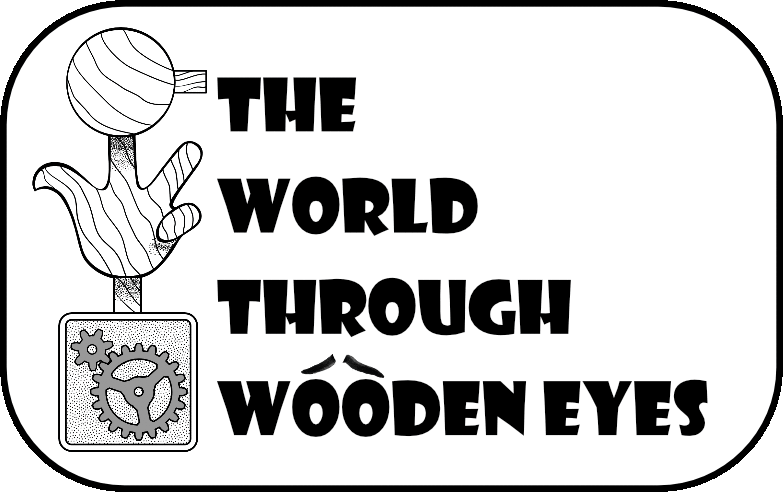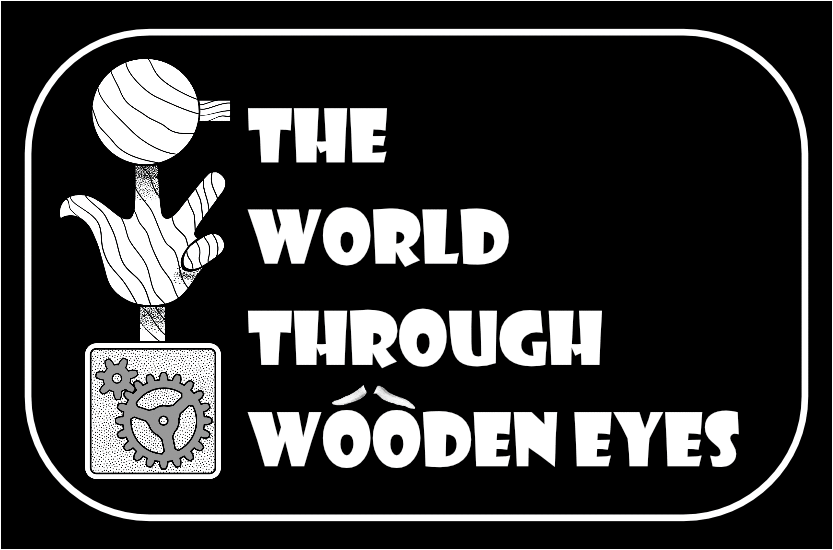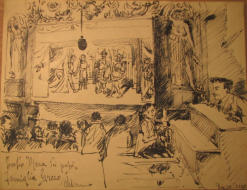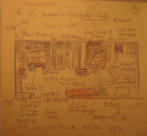NAVIGATION
SOCIAL
CONTACT
e-mail: info@theworldthroughwoodeneyes.co.uk

During
dialogues
with
puppeteers
it
is
often
interesting
to
note
how
many
are
not
familiar
with
the
names
of
the
personalities
and
founders
of
The
British
puppet
and
Model
Theatre
Guild
,
let
alone
what
they
actually
did.
It
is
not
just
a
question
of
talking
history,
it
is
important
to
understand
their
motivation
and
their
passion
for
what
they
did
in
practical
terms and why.
There
are
two
key
personalities
that
inspired
the
formation
of
The
Guild,
Harry
W.
Whanslaw,
and
Gerald
Morice
.
Harry
Whanslaw,
more
affectionately
known
as
Whanny,
was
one
of
the
most
prolific
illustrators
of
books,
mostly
of
an
educational
nature,
in
the
early twentieth century.
Ebay,
recently
offered
four
original
pen
an
ink
drawings,
illustrations
for
‘A
History
of
The
British
Isles’,
signed
and
dated
1914.
Not
only
do
they
demonstrate
his
remarkable
skills
as
an
illustrator,
they
also
show
his
ability
to
capture
the
movement
of
his
subjects
and
the
atmosphere
of
the
settings
that
surround
them,
they
also
make
you
realise
the
volume
of
knowledge of historical accuracy in the detail.
Having
a
substantial
volume
of
original
drawings,
illustrations
and
paintings,
notebooks
and
a
number
of
his
research
books,
it
is
fascinating
to
recognise
the
level
of
detailed
research
undertaken
by
him
and
other
illustrators
of
the
period.
His
skills
were
not
only
demonstrated
in
terms
of
visual
imagery,
but
also
in
his
writing;
reading
his
books
is
still
a
joy,
and
they
are
as
fresh
and
lively
as
ever.
His
numerous
illustrated
articles
for
‘Chatterbox‘, are an inspiration.
Like
so
many
talented
artists,
Whanny
loved
the
popular
arts
which
informed
and
inspired
so
many
ideas,
not
the
least
the
puppet
theatre
and
the
juvenile
drama.
Whanny
was
fortunate
to
see
a
number
of
the
family
travelling
marionette
theatres,
and
he
regularly
spent
precious
time
and
money
in
the
great
street
markets
of
London,
where
he
bought
any
item
of
curiosity.
It
was
always
a
great
joy
to
be
left
in
his
studio,
a
real
‘cabinet
of
curiosities’.
to
sort
through
the
vast
amounts
of
oddities
that
were
everywhere.
In
the
corner
of
his
studio
was
the
proscenium
of
‘The
Studio
Theatre’
cut
through
the
wall
into
a
box room that housed the stage and hanging rails for the marionettes
Perhaps
the
most
significant
of
his
works
was
the
‘Chatterbox
Annual’,
published
in
1923,
that
contained
his
illustrated
items
throughout
it,
with
the
title
‘The
Toy
That
Never
Grows
Old’.
The
popularity
of
this
led
to
the
publication
of
the
book
that
inspired
so
many
model
theatre enthusiasts, including myself ’Everybody’s Theatre’.
Very
little
is
known
about
Whanny’s
early
life,
and
I
am
always
searching
for
material
and
anecdotes,
and
would
be
grateful
for
any
items.
It
would
be
interesting
to
know
more
about
which
art
school
he
attended
in
London,
and
when
and
what
he
exhibited
at
The
Royal Academy.
John M. Blundall.
Harry W. Whanslaw

CONTACT
e-mail: info@theworldthroughwoodeneyes.co.uk
SOCIAL

During
dialogues
with
puppeteers
it
is
often
interesting
to
note
how
many
are
not
familiar
with
the
names
of
the
personalities
and
founders
of
The
Guild
,
let
alone
what
they
actually
did.
It
is
not
just
a
question
of
talking
history,
it
is
important
to
understand
their
motivation
and
their
passion
for
what
they
did
in
practical
terms and why.
There
are
two
key
personalities
that
inspired
the
formation
of
The
Guild,
Harry
W.
Whanslaw,
and
Gerald
Morice
.
Harry
Whanslaw,
more
affectionately
known
as
Whanny,
was
one
of
the
most
prolific
illustrators
of
books,
mostly
of
an
educational
nature,
in
the early twentieth century.
Ebay,
recently
offered
four
original
pen
an
ink
drawings,
illustrations
for
‘A
History
of
The
British
Isles’,
signed
and
dated
1914.
Not
only
do
they
demonstrate
his
remarkable
skills
as
an
illustrator,
they
also
show
his
ability
to
capture
the
movement
of
his
subjects
and
the
atmosphere
of
the
settings
that
surround
them,
they
also
make
you
realise
the
volume
of
knowledge
of
historical accuracy in the detail.
Having
a
substantial
volume
of
original
drawings,
illustrations
and
paintings,
notebooks
and
a
number
of
his
research
books,
it
is
fascinating
to
recognise
the
level
of
detailed
research
undertaken
by
him
and
other
illustrators
of
the
period.
His
skills
were
not
only
demonstrated
in
terms
of
visual
imagery,
but
also
in
his
writing;
reading
his
books
is
still
a
joy,
and
they
are
as
fresh
and
lively
as
ever.
His
numerous
illustrated
articles
for
‘Chatterbox‘,
are
an
inspiration.
Like
so
many
talented
artists,
Whanny
loved
the
popular
arts
which
informed
and
inspired
so
many
ideas,
not
the
least
the
puppet
theatre
and
the
juvenile
drama.
Whanny
was
fortunate
to
see
a
number
of
the
family
travelling
marionette
theatres,
and
he
regularly
spent
precious
time
and
money
in
the
great
street
markets
of
London,
where
he
bought
any
item
of
curiosity.
It
was
always
a
great
joy
to
be
left
in
his
studio,
a
real
‘cabinet
of
curiosities’.
to
sort
through
the
vast
amounts
of
oddities
that
were
everywhere.
In
the
corner
of
his
studio
was
the
proscenium
of
‘The
Studio
Theatre’
cut
through
the
wall
into
a
box
room
that
housed the stage and hanging rails for the marionettes
Perhaps
the
most
significant
of
his
works
was
the
‘Chatterbox
Annual’,
published
in
1923,
that
contained
his
illustrated
items
throughout
it,
with
the
title
‘The
Toy
That
Never
Grows
Old’.
The
popularity
of
this
led
to
the
publication
of
the
book
that
inspired
so
many
model
theatre
enthusiasts,
including
myself
’Everybody’s
Theatre’.
Very
little
is
known
about
Whanny’s
early
life,
and
I
am
always
searching
for
material
and
anecdotes,
and
would
be
grateful
for
any
items.
It
would
be
interesting
to
know
more
about
which
art
school
he
attended
in
London,
and
when
and
what
he
exhibited
at The Royal Academy.
John M. Blundall.
Harry W. Whanslaw










































